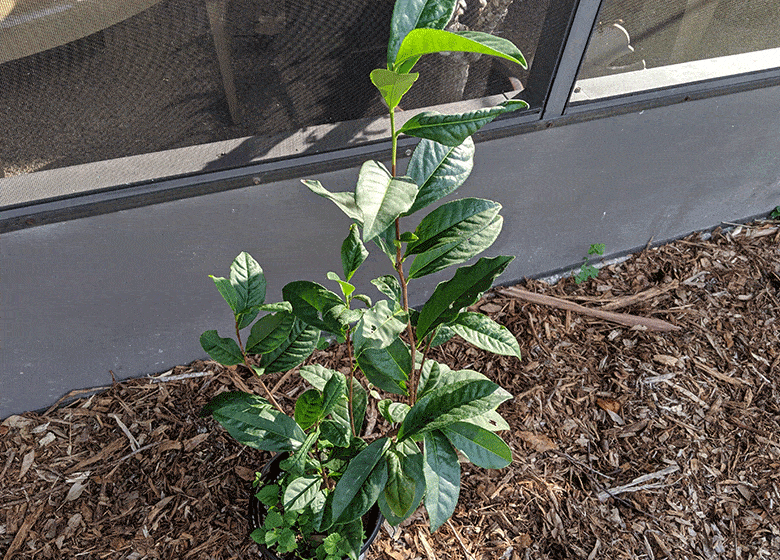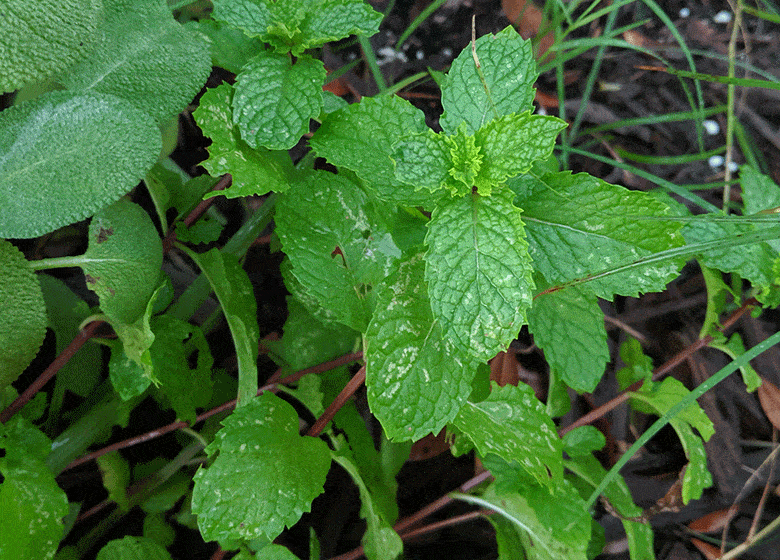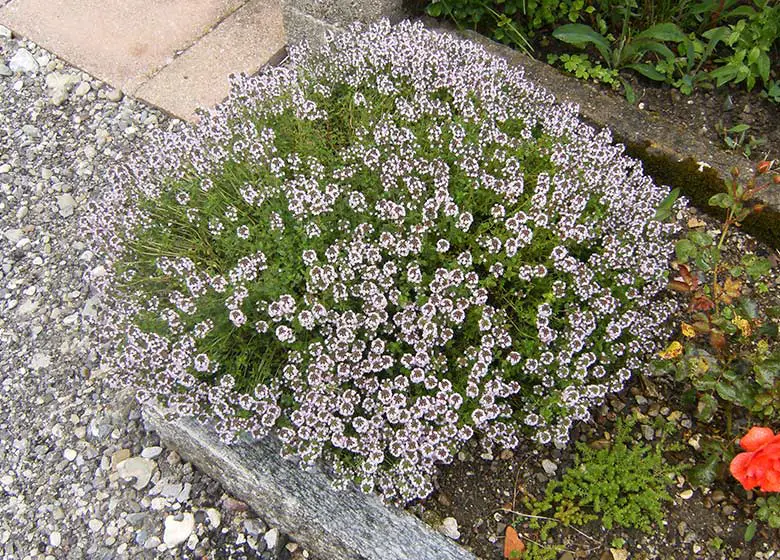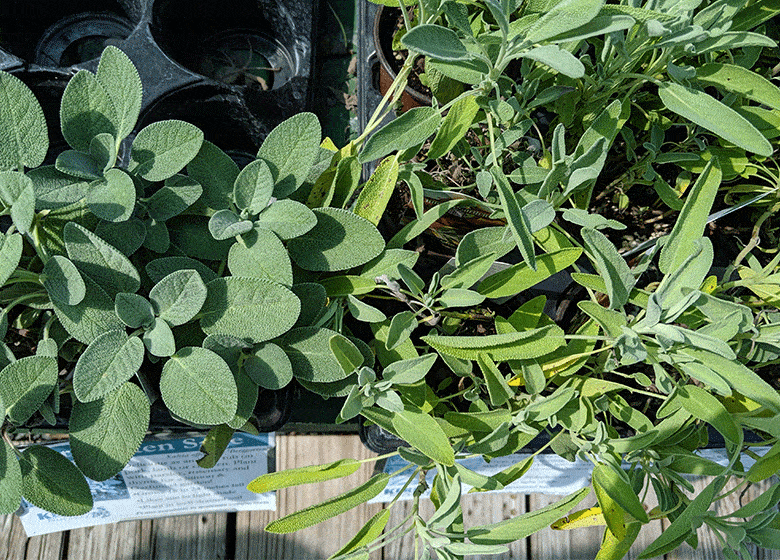We have a ton of plants that we can use to grow a tea garden in Florida.
In Florida, we can grow common tea called Camellia sinensis, which is the source of many popular teas like black and green tea. Florida can also grow many plants that can make herbal tea as well. Plants like chamomile, Hibiscus, Lemon balm, and jasmine can all be used to make tea.
There are a number of plants that you can grow that will make a medicinal and beautiful tea garden. There are several different teas that you can make depending on the processing method that you use and different herb combinations.
Best Plants For A Florida Tea Garden
Below are 11 different types of plants that you can grow in Florida that will make a great tea garden. You could go out and pick these herbs fresh or dry them and make all sorts of different teas.
Camellia sinensis
This is the common tea plant. But within this, it breaks down even further. There is also the china type and the Assam type. China types are usually smaller and have leaves that are serrated. Assam types can grow into large shrubs or small trees with smoother leaves.

Tea plants enjoy full sun to part shade. Assam types benefit more from shade than china types.
You can grow tea plants from seedlings but you will have to have some patience before you can harvest. From seedling to harvesting it can be up to three years. If you find plants that are grown from cuttings this time can be cut in half.
Tea comes from the newest leaves on the bush. Tea plants can grow up to 5 ft tall and should be trimmed back regularly to encourage new growth.
Chamomile
Chamomile is a really easy herb to grow, especially in Florida. Once established it is drought tolerant.
Plant in full sun and well-draining soil.
There are two types of chamomile that are commonly grown in Florida. Roman and German types.
Roman types are usually considered better for making beverages. Most people think that german types have a bitter-tasting quality to them.
The flowers are used for making tea. In order to encourage more flower growth, you should cut back your plants after they flower.
Hibiscus
There are hundreds of different kinds of hibiscus. I’m sure you’ve seen them in your neighbor’s yards and business that you go to. Hibiscus plants grow very well in Florida.
However, the common looking hibiscus isn’t the best option that you have for growing tea. The most common hibiscus used for tea is hibiscus sabdariffa. It goes by many common names like Roselle, Florida cranberry, and red sorrel.
This plant has attractive foliage and flowers which look quite different from your average hibiscus. Roselle can reach heights of 7 feet tall and be covered in crimson flowers during the fall.
Plant in full sun and well-draining soil. Frost and freeze will damage these plants, those in north Florida should plant in the early spring in order to ensure a harvest of flowers for your tea.
Lavender
Lavender can be grown from seeds but it is rather easy to grow as a transplant from a local nursery. There are many types of lavender but the one that is generally considered best for making tea is the English variety.
Lavender enjoys full sun but hates for its roots to be kept wet.
The flowers and leaves can be used to make tea. You can either harvest and dry the leaves and flowers or you can use them fresh.
Lavender is known for its calming effects, it also helps battle colds and eases upset stomachs.
Mint
Mint may be one of the easiest herbs to grow on this list. It spreads like a weed and can take over a garden if you are not careful.
You can grow peppermint, spearmint, apple mint, orange mint in Florida.

You will have an abundant amount of mint to use for teas. One plant should provide you with plenty of leaves to use. It might be a smart idea to grow mint in a pot by itself. It’s roots grow wild under the soil and can choke out other plants eventually.
Mint is especially good for digestion and easing the stomach.
Lemon Balm
Lemon Balm is also part of the mint family so it will also grow wild if allowed to.
Plant in full sun and well-draining soil. These plants can grow up to a foot tall but will spread much wider. It’s a good idea to also plant this plant in a container.
It produces small white flowers which, as well as the leaves, can be used to make a nice tea.
You can grow from seed or cutting. Either option is easy.
Ginger
Ginger has a long list of benefits for you, from reducing inflammation to increasing circulation.
This herb is easily grown from leftover pieces of the root of the plant. You can buy organic ginger from your local grocery store and plant little pieces and a plant will sprout.
I’ve found that ginger grows best in part shade with plenty of water. The root of the plant is used to make tea, you can use it fresh or dried.
Thyme
There are a number of different types of thyme that will grow in Florida. However, one of the best ones for tea is lemon thyme.
Lemon thyme is a low growing plant that works great as a ground cover.

Other types of thyme can be used as well and I encourage you to experiment with different types of thyme.
thyme can be grown from seed but it is much easier to just buy a small plant from your local nursery. Plant in full sun and give it about a foot of space all the way around. The leaves and flowers are both used in tea.
Jasmine
Jasmine blossoms are used to flavor your tea. They add a very powerful scent to your brew, which opens a lot of different flavors in your cup of tea.
Jasmine is traditionally used to flavor common teas like green or black tea. You can use the fresh flowers to add a nice flavor and scent to your already prepared teas. many times jasmine flowers are allowed to set with tea leaves for many days to absorb their scent and the flowers are then removed before packaging or brewing.
Do not use popular jasmine varieties like variegated jasmine for tea, they can actually be toxic. The best variety of jasmine for tea is J. Officinale, otherwise known as common Jasmine.
Other popular varieties of jasmine for tea are J. Sambac or J. Polyanthum.
It’s best to harvest flowers during the heat of the day after all the dew has vanished.
Rosemary
Rosemary is one of the easiest herbs to grow in Florida. It prefers full sun and well-draining soil.
When it comes to health benefits of rosemary and tea, it will help boost your memory, increase your mood and decrease inflammation.
Rosemary is a powerful herb that has a lot of tannins in it. You will definitely have a better experience if you combine rosemary tea with some sort of sweetener. It could be honey or stevia (which you could grow yourself).
Just a tiny dash of rosemary will go a long way in your cup of tea. You can use either fresh or dried leaves, you can also use the slowers to add an extra punch to your tea. It’s best to remove the flowers before brewing.
Rosemary doesn’t have a very good germination rate when growing from seed. You can increase your odds by purchasing primed seeds, but it’s best to buy plants that are already started from your local nursery or grow from cuttings yourself.
Sage
When I think of sage I think of thanksgiving and stuffing. But sage and all of its aromatic wonderfulness is a great addition to your Florida tea garden. It has a soft, and earthy flavor.
Most sage has an intense, almost pine-like flavor and aroma to it. One plant will most likely be all you need, a few sage leaves will go a long way in your cup of tea.

Sage grows well in our Florida climate. It prefers full sun and well-draining soil.
Harvest by snipping the stems just above where two leaves have sprouted. For tea, you can remove the leaves from the stems and add fresh leaves to your brew or dry the leaves.
Sage in tea is traditionally used to treat digestive issues and contains large amounts of antioxidants.
St. Johns Wart
St. Johns wort grows so well that in many places it’s considered a weed.
It is important to note that St. Johns Wort can be toxic to livestock if large amounts are ingested. So if you have cows or something like that, you may want to skip growing this one.
Many growers in Florida have found it difficult to successfully get the plant to flower here in our climate. Instead of growing upright and flowering many growers have had their plant grow almost like a ground cover.
Even though many growers have had a problem with it I would still say give it a try, who knows maybe you will be the one to figure out how to grow this thing down here!
Harvesting And Drying
For most of the herbs on this list, it is best to use the flowers dried or fresh. If using them fresh you would just simply pick the flower, rinse them off, and drop them into your tea mixture.
This, however, does not work for the common tea plant, Camellia Sinensis. That plant needs to be harvested and processed before using it. We will talk more about that in the next section.
If you want to dry your picked flowers there are a few ways to do this. You can tie bunches of flowers by the stem and let them hang upside down in full sun, on a fence maybe?
You can also use some sort of mesh rack, that will allow air to flow through it to set your flowers on. Things like old screens would work well. If you place them in a bright and dry spot they will dry out within a few days.
If you’re in a hurry you can use a dehydrated on its lowest setting.
The whole key to drying herbs is to make sure they aren’t dried in a cold and wet place. In a chilly and damp environment, you are just asking for mold.
Processing Camellia Sinensis
Camellia Sinensis is the plant where lots of common teas come from. This plant is responsible for black tea, green tea, and oolong tea. The type of tea you get from it will depend on how your tea leaves are dried and processed.
All types of teas are made from the youngest tender leaves of the plant. After plucking the leaves is when the processing to turn them into whatever tea you want will begin.
Black Tea
Black tea is made by taking the leaves that you have freshly harvested and rolling them vigorously in your hand. Basically crushing the leaves and allow all the liquid to ooze out from the severely bruised leaves.
The leaves will start to change to a darker color.
Allow the leaves to sit in a warm and dry place until they turn brown. This can take several hours.
After that, you should place them on a baking sheet and put them in an oven set to 225°F for about 20 minutes.
Oolong Tea
Oolong tea is also crushed into your hands, just not as much as black tea. You don’t want it to be completely bruised up and leaking, just gently bruised.
After gently rolling them allow set for 30 minutes to an hour. Just long enough for the leaves to just begin to turn brown. You still want some color in them.
At this point, you should place the leaves in an oven set to 225°F for about 20 minutes.
Green Tea
Green tea is not bruised at all. In order to make green tea you should put freshly picked leaves in a dry pan on the stove set to medium heat for 2 minutes or so.
You can also stem freshly picked leaves using a vegetable steamer for 2 minutes.
Green tea is a much more delicate tea compared to black tea and oolong tea. When brewing with green tea you want to avoid using boiling water because this could burn the tender leaves.
Storing Herbs For Tea
It’s best to store your freshly dried flowers, herbs and teas in an airtight container, preferably away from the light.
This area shouldn’t be overly warm or cold. Your kitchen cabinet is usually a really good place. nice and simple.
If you want to place your teas on a kitchen counter where they will be exposed to sunlight, be sure to get tin containers or ceramic. Glass jars will work fine if storing in a cabinet.
Homegrown Tea Recipes
Get creative here! These are tea recipes that just sound like they would be fantastic tasting.
But you know your taste buds better than anybody else. What herbs sound good together to you? Don’t be afraid to experiment. Experimentation is a major benefit when it comes to growing a tea garden.
Hibiscus tea
| 2/4 | Hibiscus |
| 1/4 | Chamomile |
| 1/4 | Lemon Balm |
Mint Tea
| 3/4 | Mint |
| 1/4 | Lemon Balm |
Jasmine Tea
| 1/4 | Jasmine |
| 2/4 | Black Tea |
| 1/4 | lemon Balm |
Lavender Tea
| 1/4 | Lavender |
| 1/4 | Chamomile |
| 1/4 | Mint |
| 1/4 | Ginger |
Lemon Ginger Tea
| 1/4 | Lemon Balm |
| 1/4 | Ginger |
| 1/4 | Oolong |
| 1/4 | Chamomile |
How To Grow A Tea Garden In Florida
W can certainly grow a tea garden in Florida. We have the climate to support the common tea plant, Camellia Sinensis, as well as many other herbs that make a fantastic tea garden.
In Florida, we can easily grow herbs like Chamomile, Hibiscus, Lemon Balm and ginger. The best time to plant all of these herbs is in the early springtime, after any fear of a cold front rolling through.
All of these plants really enjoy part sun to full sun.
Be sure that you’re planting them in dirt that is well-draining and has good organic material in it. If you’re planting directly into the ground at the very least you should add a bag of compost and a nice thick layer of mulch.
Don’t forget to water and check on your plants daily. Inspect them for bugs and whatnot.
Harvest when your plants are flowering and get creative with your different tea mixtures.
